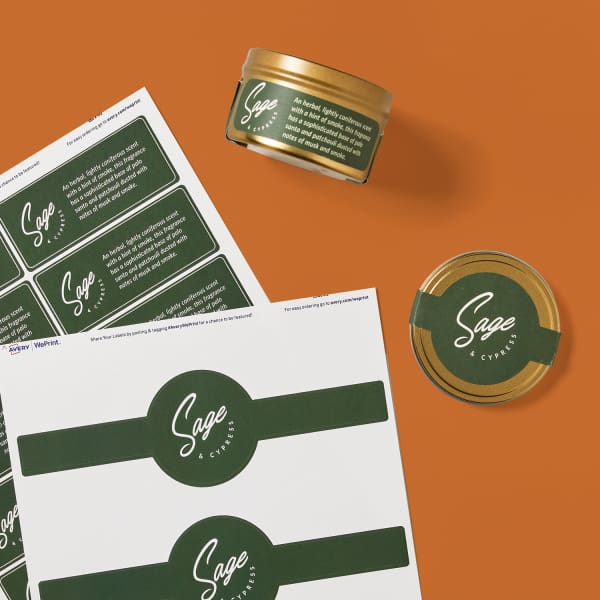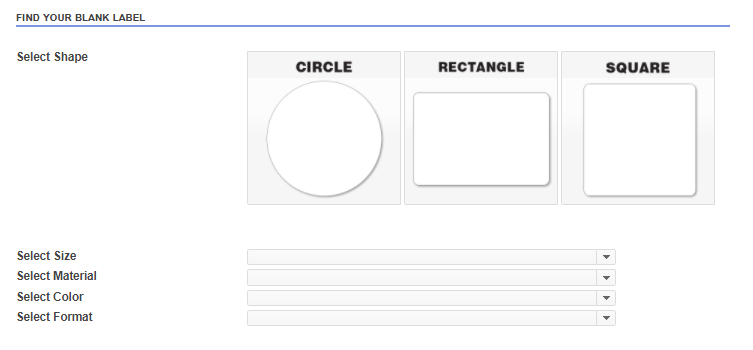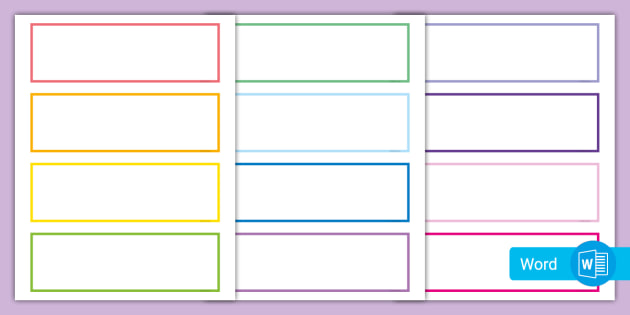Understanding Exactly How Blank Labels Job to Enhance Your Labeling Experience
Comprehending the technicians of blank labels is important for maximizing your labeling techniques across numerous contexts. These functional tools provide considerable advantages, such as personalization and versatility, making them a suitable option for both specialist settings and individual use. From inventory administration to home company, the ramifications of their calculated application can lead to enhanced effectiveness. To totally comprehend how these labels can transform your procedures, one need to consider the various types available and the myriad means they can be customized to match details needs.

Benefits of Utilizing Blank Labels
Blank labels offer a functional solution for various classifying demands, making them very useful in both individual and expert settings. Their adaptability permits users to develop customized labels tailored to details requirements, boosting business performance. Whether used in office, retail environments, or industrial applications, blank labels help with the recognition and classification of products, documents, and individual items.
One significant advantage of blank labels is their cost-effectiveness. By permitting customers to publish just the labels they need, waste is minimized, and supply management ends up being extra convenient. Additionally, blank labels work with numerous printing approaches, consisting of inkjet and printer, making them easily accessible for different customers.

Moreover, the usage of blank labels simplifies the procedure of updating details, as users can easily publish brand-new labels to replace outdated ones, guaranteeing that all items and files are accurately classified. Generally, blank labels provide a practical and effective labeling service for varied applications.
Sorts Of Blank Labels Available
What options are offered when it comes to blank labels? Blank labels come in a variety of kinds, each suited for various applications and choices. One of the most usual types consist of paper labels, which are flexible and economical, making them perfect for everyday use. They are available in different finishes, such as matte and glossy, permitting aesthetic versatility.
Another preferred alternative is synthetic labels, frequently made from materials like polyester or vinyl. These labels are known for their sturdiness and resistance to water, chemicals, and tearing, making them appropriate for rough environments. They are typically utilized in commercial setups or for labeling products that might be revealed to dampness.
Additionally, there are thermal transfer labels, which require a printer that makes use of heat to move ink onto the label surface area. These labels are preferred for their high-quality click this site print and longevity.
Lastly, specialty labels deal with certain requirements, such as detachable labels for short-lived use or high-temperature labels for extreme conditions. Comprehending these options allows individuals to pick the most proper blank tag for their one-of-a-kind labeling needs.
Customization Options for Labels
A broad array of personalization choices is offered for labels, enabling users to customize them to particular demands and branding requirements. Users can select from numerous dimensions, shapes, and materials to ensure that the labels properly fit their desired function. Common materials consist of paper, polyester, and plastic, each supplying different degrees of toughness and aesthetic appeal.
Color alternatives play an important function in customization, enabling brand names to maintain uniformity with their company identity. Users can pick from a range of shades or perhaps select custom-made printing to match certain branding components. Furthermore, labels can be printed with unique layouts, logo designs, and text, enhancing brand recognition and aesthetic effect.
Another important aspect is the option of adhesive. Tags can be developed with irreversible, detachable, or repositionable adhesives, depending on the application needs. This adaptability permits efficient labeling remedies across numerous environments, from retail to industrial setups.

Tips for Effective Labeling
Effective labeling goes beyond customization; it likewise includes calculated considerations that boost capability and communication. To attain reliable labeling, begin by clearly defining the function of each tag.
Next, prioritize exposure by picking ideal shades and font styles. High contrast between message and history enhances readability, while larger font styles Our site assist in quick identification. Additionally, ensure that labels are positioned in a constant and sensible fashion, making it much easier for customers to locate and analyze details.
Consider the sturdiness of labels. Select materials fit for the certain setting where the labels will certainly be made use of, whether it be indoors or outdoors. Water resistant or tear-resistant choices may be essential depending on the context.
Last but not least, regularly review and update your labels to mirror any type of adjustments in information or usage. This aggressive strategy not only preserves quality but additionally prevents complication with time. By adhering to these suggestions, you can take full advantage of the performance of your labeling initiatives, ensuring they serve their intended function successfully.
Applications of Blank Labels
Blank labels use many applications across different industries, making them a vital tool for organization and interaction. These flexible labels are typically utilized in storehouses for inventory monitoring, permitting organizations to easily identify and track products. By applying blank labels to storage bins, racks, or pallets, business can simplify their procedures and lower the likelihood of errors.
In the medical care market, blank labels play a critical role in identifying medicines and medical supplies, making certain correct identification and usage. Customizable labels can consist of crucial details such as dose, expiry dates, and person information, boosting safety and security and compliance.
In retail, blank labels aid in prices products, supplying look at here now promotions, or classifying shelf places, which inevitably enhances the client experience. They permit for fast updates to prices or item info without the requirement for pre-printed labels.
In addition, blank labels are beneficial for individual use, such as arranging home workplaces, crafting, or identifying food containers. Their flexibility enables people to create customized services that satisfy particular demands. Overall, the applications of blank labels are considerable, highlighting their value in fostering effectiveness and clarity in various settings.
Conclusion
Finally, blank labels offer a versatile and reliable solution for different classifying requirements. Their adaptability in dimension, form, and material permits customized applications across various environments. By leveraging personalization choices and reliable labeling techniques, organizations can enhance clearness and communication (Blank Labels). Eventually, the assimilation of blank labels right into functional procedures adds to enhanced efficiency, making them a vital resource for both individual and professional use.